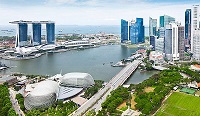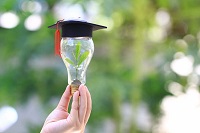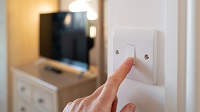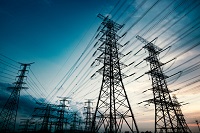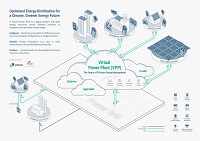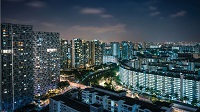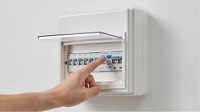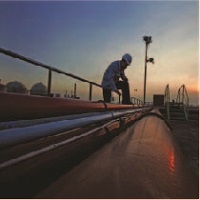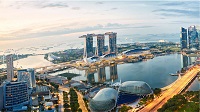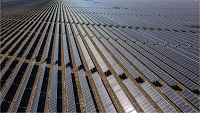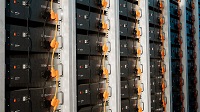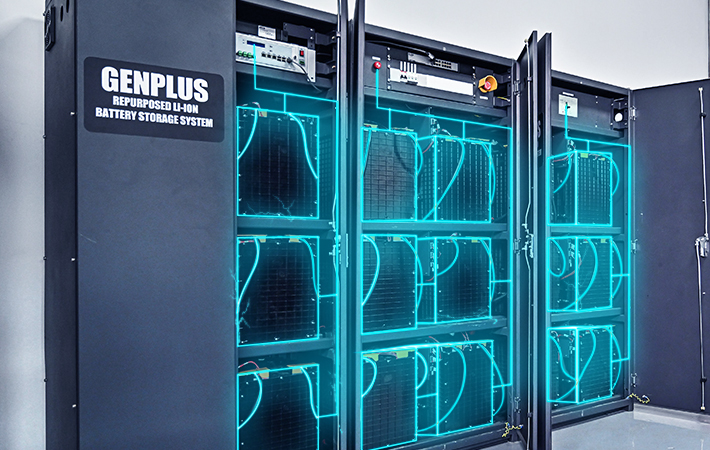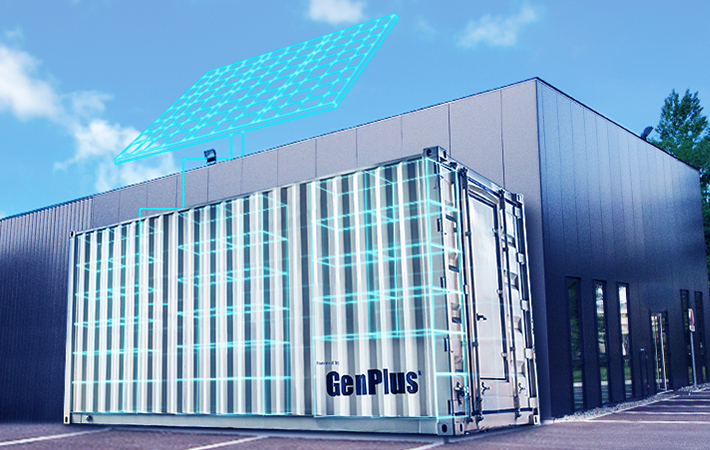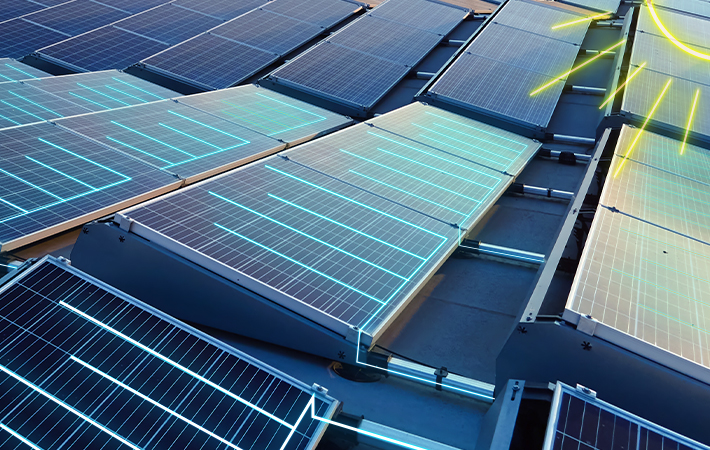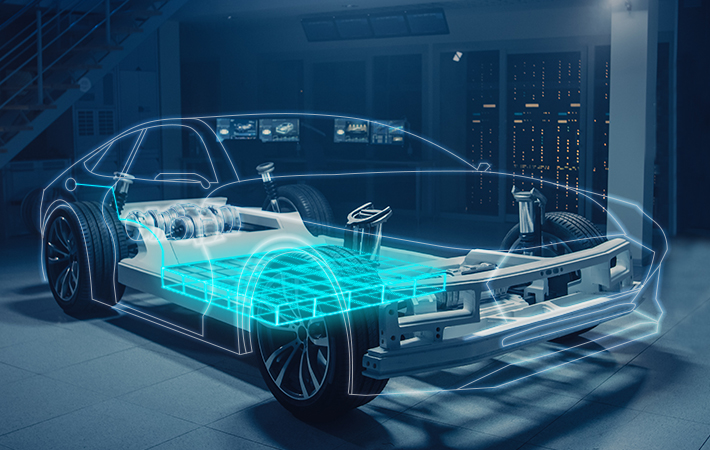A Singapore Government Agency WebsiteHow to identify
Official website links end with .gov.sg
Government agencies communicate via .gov.sg websites
(e.g. go.gov.sg/open).Trusted websites
Secure websites use HTTPS
Look for a lock ( )or https:// as an added precaution. Share sensitive information only on official, secure websites.
We are no strangers to batteries that power our electronic devices. Imagine that on a larger scale, and we have Energy Storage Systems (ESS) that can power homes and businesses.
And one innovative local company is going beyond the current by harnessing used batteries from electric vehicles, no less!
In the first of our EMA Explores series, our energy guru EMA Watt-son caught up with Lionel Moh, Head of Energy Storage Solutions at GenPlus to find out how they are powering a sustainable future.
We know GenPlus is in the business of energy storage systems (ESS). But first, what are ESS?
Lionel: Energy storage systems (ESS) are like batteries in which you can store energy for use later. You can see such devices of all sizes, ranging from small batteries in your wireless earbuds to electronics like laptops, to large-scale systems like electric vehicles and even battery banks for remote villages.
At GenPlus, batteries are at the core of our business. Our product line is categorised by application.
For example, we have batteries that are as small as a briefcase which you can plug into for power. We also have larger scale modular and shipping container-sized ESS that can be used to power homes and businesses.
Modular ESS are battery racks that can be put together in a cabinet, while individual modular systems can be placed into containers that are commonly used for shipping. Container-sized ESS are more convenient for installation and segregation, and also weather-proof. In the future, we are looking into developing stackable ESS containers to save on space.
So, where does the energy in ESS come from?
Lionel: Energy in the ESS can come from any source. And the most viable energy source for Singapore is solar, which is clean and available all year round. However, solar is intermittent in nature. The amount of solar output can be affected by weather conditions such as cloud cover, which will result in an instant drop in power supply.
This is the reason why ESS are known to complement our solar deployment efforts. ESS can mitigate the intermittency of solar power by releasing the stored energy when needed.
I hear GenPlus uses old electric vehicle (EV) batteries for your ESS! Tell us more.
Lionel: Yes! While EVs require high power from their batteries for acceleration, their old batteries with less power capacity can still be used for other applications. Just like how the old batteries from a toy can still be used for an alarm clock or a TV remote control.
As more EVs get onto our roads, Singapore will eventually see more used batteries that require proper disposal. Therefore, we can do more to repurpose old ones and utilise them to their full potential before disposing them. This also minimises the carbon footprint of the batteries.
Since 2020, GenPlus has embarked on the journey to repurpose EV batteries to give them a second life. The process starts with ensuring that the batteries are safe before running in-depth tests on the battery health. Thereafter, the batteries are graded before being grouped for other uses.
As we continue to optimise the process of repurposing batteries, we expect the costs of our ESS to drop by around 30%. With a reduction in capital costs and carbon footprint, we believe that second-life batteries will be a great alternative for the future of energy storage.
How much energy can second-life batteries provide? And how much longer can they be used for?
Lionel: To illustrate, first-life batteries within a 40-foot container can power up to 4 megawatts per hour. That is equivalent to powering up to 400 households for an entire day. ESS using second-life batteries can provide up to 50% to 70% of the energy in those ESS using first-life batteries.
Depending on the application, second-life batteries can last three to five years. Five years ago, first-life batteries would have around 3,000 charging cycles. Today, they can have around 6,000 charging cycles. With advancements in battery technology, the capacity of second-life batteries can be extended in time to come.
Where can we deploy ESS in Singapore?
Lionel: One of the places is HDB car parks.
To support Singapore’s accelerated goal of making every HDB town EV-ready by 2025, the Government will deploy EV charging points in all HDB car parks by 2025. Car parks will need to have the capacity for additional electrical load for the EV chargers. ESS can therefore be used to supply the additional power needed at car parks.
During lull periods of the day when fewer EVs are charging, ESS can be charged with spare electrical power. The stored power can then help to supplement the electrical needs of EV chargers during peak periods. If solar panels are integrated with the ESS at car parks, we can also store the solar power in the ESS for use at other times of the day.
Why are ESS important as Singapore greens its energy sources?
Lionel: Most green energy sources such as solar are intermittent in nature. As Singapore integrates more of such green energy sources into the power system, it is important that the power supply remains stable and reliable. The use of ESS will help to achieve just that. ESS can also double up as backup power systems, further strengthening our energy security.
What is your aspiration for ESS or sustainable energy?
Lionel: I strongly feel that ESS are key to our efforts in using more renewable energy sources. They provide the energy security that is of paramount importance to everyone.
My aspiration for ESS is to make them a distributed network of small power grids. If every HDB block is equipped with ESS, we will have backup supply to tide everyone through in the event of a power supply disruption.
Are you charged up to power a more sustainable Singapore? Share your suggestions with us, as EMA Watt-son continues to bring you more stories of how others are doing their part for a greener energy future!
